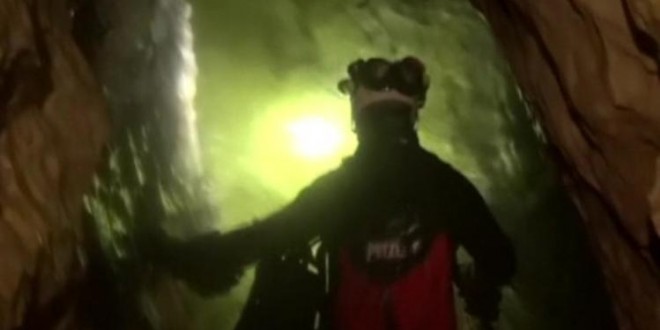Chile’s Patagonia region is known for having some of the most rugged and remote places on the planet, and this only considers the area above ground. The Centre Terre explorers have studied the relatively unknown limestone islands of Chile’s Patagonia region for 15 years. They briefly scraped the surface of Isle Diego de Almagro, 150 km west of Puerto Natales, in 1997, and returned this year for a more in-depth study of the island.
And into the depths they went.
The island’s relentless winds and rainfall, among the highest recorded in the world, have carved and dissolved the limestone rock into unique land-forms on the surface and unknown cave systems below ground.
The Centre Terre team surfaced again after exploring the 20 new caves, some 50 to 200 meters deep. The expedition members used abseiling, crawling and swimming skills to navigate each cavern from top to bottom.
Discovering this unknown territory was just the beginning. The Centre Terre group carried out scientific research to map the caves and record observed flora and fauna. The team included geologists, biologists, botanists and divers.
They also found ancient wall paintings and bone fragments indicating they weren’t the first humans in history to see the caves. The group explored one-third of the area, so the limestone rock in this region of the world holds many more mysteries.
The Centre Terre group hopes their new discovery will raise awareness about these natural systems and promote added protection for them. The Chilean government has already classified this region as the Madre de Dios Natural Reserve.
Agencies
 Canada Journal – News of the World Articles and videos to bring you the biggest Canadian news stories from across the country every day
Canada Journal – News of the World Articles and videos to bring you the biggest Canadian news stories from across the country every day



